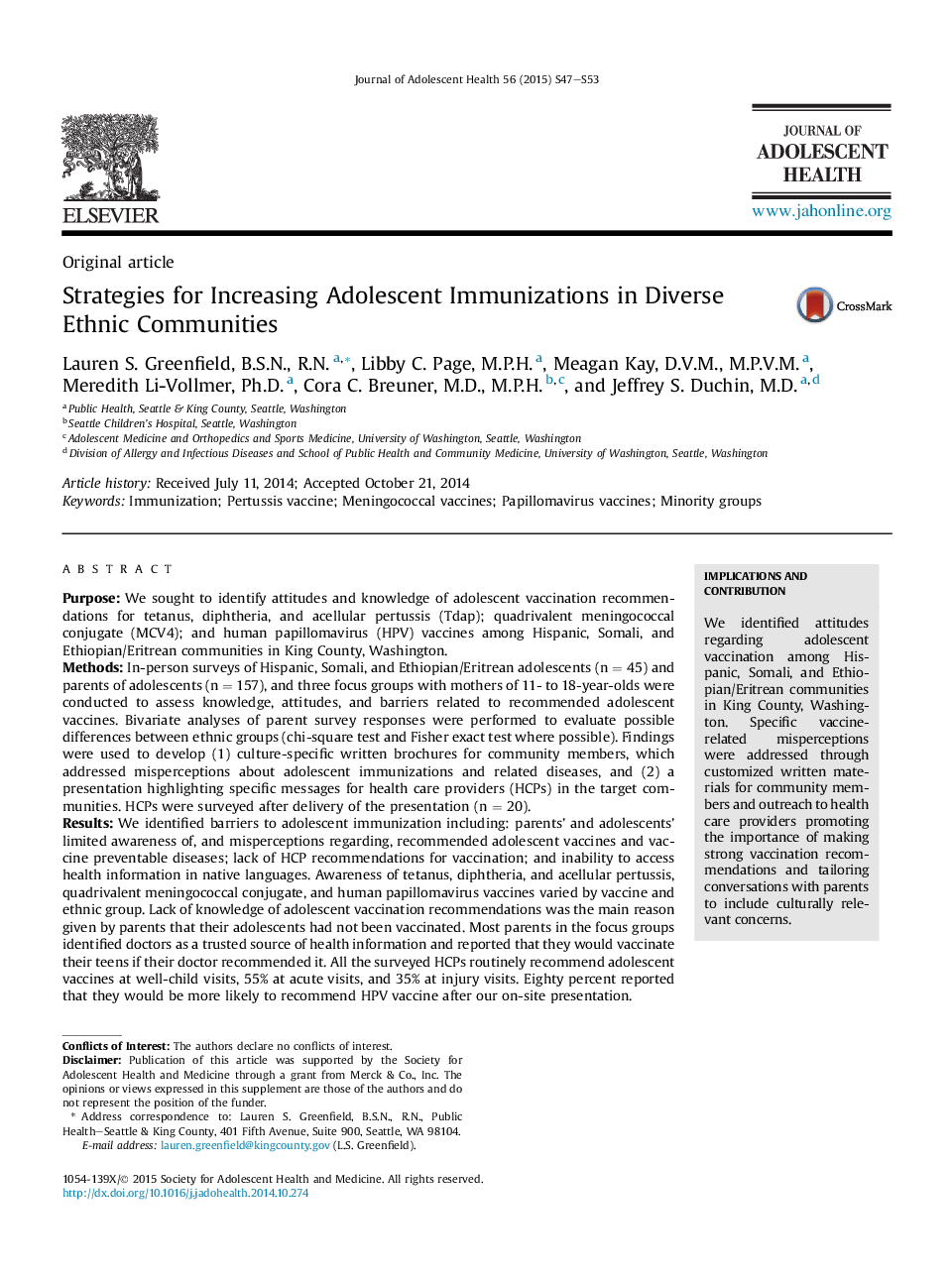| کد مقاله | کد نشریه | سال انتشار | مقاله انگلیسی | نسخه تمام متن |
|---|---|---|---|---|
| 1077970 | 950408 | 2015 | 7 صفحه PDF | دانلود رایگان |
PurposeWe sought to identify attitudes and knowledge of adolescent vaccination recommendations for tetanus, diphtheria, and acellular pertussis (Tdap); quadrivalent meningococcal conjugate (MCV4); and human papillomavirus (HPV) vaccines among Hispanic, Somali, and Ethiopian/Eritrean communities in King County, Washington.MethodsIn-person surveys of Hispanic, Somali, and Ethiopian/Eritrean adolescents (n = 45) and parents of adolescents (n = 157), and three focus groups with mothers of 11- to 18-year-olds were conducted to assess knowledge, attitudes, and barriers related to recommended adolescent vaccines. Bivariate analyses of parent survey responses were performed to evaluate possible differences between ethnic groups (chi-square test and Fisher exact test where possible). Findings were used to develop (1) culture-specific written brochures for community members, which addressed misperceptions about adolescent immunizations and related diseases, and (2) a presentation highlighting specific messages for health care providers (HCPs) in the target communities. HCPs were surveyed after delivery of the presentation (n = 20).ResultsWe identified barriers to adolescent immunization including: parents' and adolescents' limited awareness of, and misperceptions regarding, recommended adolescent vaccines and vaccine preventable diseases; lack of HCP recommendations for vaccination; and inability to access health information in native languages. Awareness of tetanus, diphtheria, and acellular pertussis, quadrivalent meningococcal conjugate, and human papillomavirus vaccines varied by vaccine and ethnic group. Lack of knowledge of adolescent vaccination recommendations was the main reason given by parents that their adolescents had not been vaccinated. Most parents in the focus groups identified doctors as a trusted source of health information and reported that they would vaccinate their teens if their doctor recommended it. All the surveyed HCPs routinely recommend adolescent vaccines at well-child visits, 55% at acute visits, and 35% at injury visits. Eighty percent reported that they would be more likely to recommend HPV vaccine after our on-site presentation.ConclusionsA strong recommendation from the physician is a critical factor influencing parents' decision to vaccinate, even when hesitancy exists. Other factors (such as personal experiences with these diseases and religious and cultural beliefs) also influence parents' decisions regarding vaccination. Knowledge of beliefs, misperceptions, and concerns can help inform strategies to improve adolescent vaccine uptake among specific ethnic populations, including the availability of culturally tailored, translated information. Additionally, HCPs may benefit from guidance on communicating with ethnic populations to support meaningful dialogue with families about the risks and benefits of adolescent vaccines.
Journal: Journal of Adolescent Health - Volume 56, Issue 5, Supplement, May 2015, Pages S47–S53
